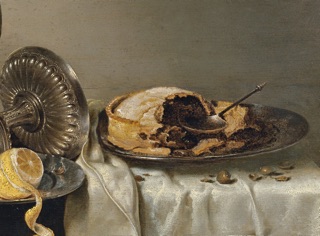Revisiting Historical Recipes
Description


After you’ve found an historic recipe, sourced appropriate ingredients, figured out the maddeningly imprecise quantities, and grappled with instructions that are often little more than a reminder for someone who already knows how to cook the dish, you’re left with an insoluble mystery: how should it taste? If you’re in search of some notion of authenticity, that is the ultimate stumbling block. There is just no way to know. Or maybe there is.
Marieke Hendriksen of the Royal Academy of Arts and Sciences in Amsterdam and her colleagues recently published a paper outlining a procedure for approaching the taste of the past rigorously. After a thorough analysis of early cookbooks as well as medical texts and botanical treatises from the Low Countries, they settled on an apple pie from the 1669 De Verstandige kock.
Dough
Take wheat flour, butter, rosewater, sugar and some eggs, of each as needed.To make an apple pie the Wallonian way
Take peeled apples the cores removed cook them in Rhenish wine well done, add butter, ginger, sugar, raisins, cinnamon, all cooked well together, then stir in the yolks of two eggs put it in your dough and bake in the Oven as above [i.e. “with fire from below and above”].
After all the analysis and experimentation, though, there’s only one thing to do: taste the end result.
Notes
- The published paper is Tasting the Past? Developing a Methodology for Researching Historical Tastes in Global Food History, which is behind a paywall, but …
- Here is the transcript.
- Banner photo courtesy Marieke Hendriksen. Cover photo detail from Still Life with Fruit Pie and various Objects, by Willem Claesz. Heda 1634, from the Museo Nacional Thyssen-Bornemisza, Madrid. This one has a lid, and may not be apple, but that’s OK.






